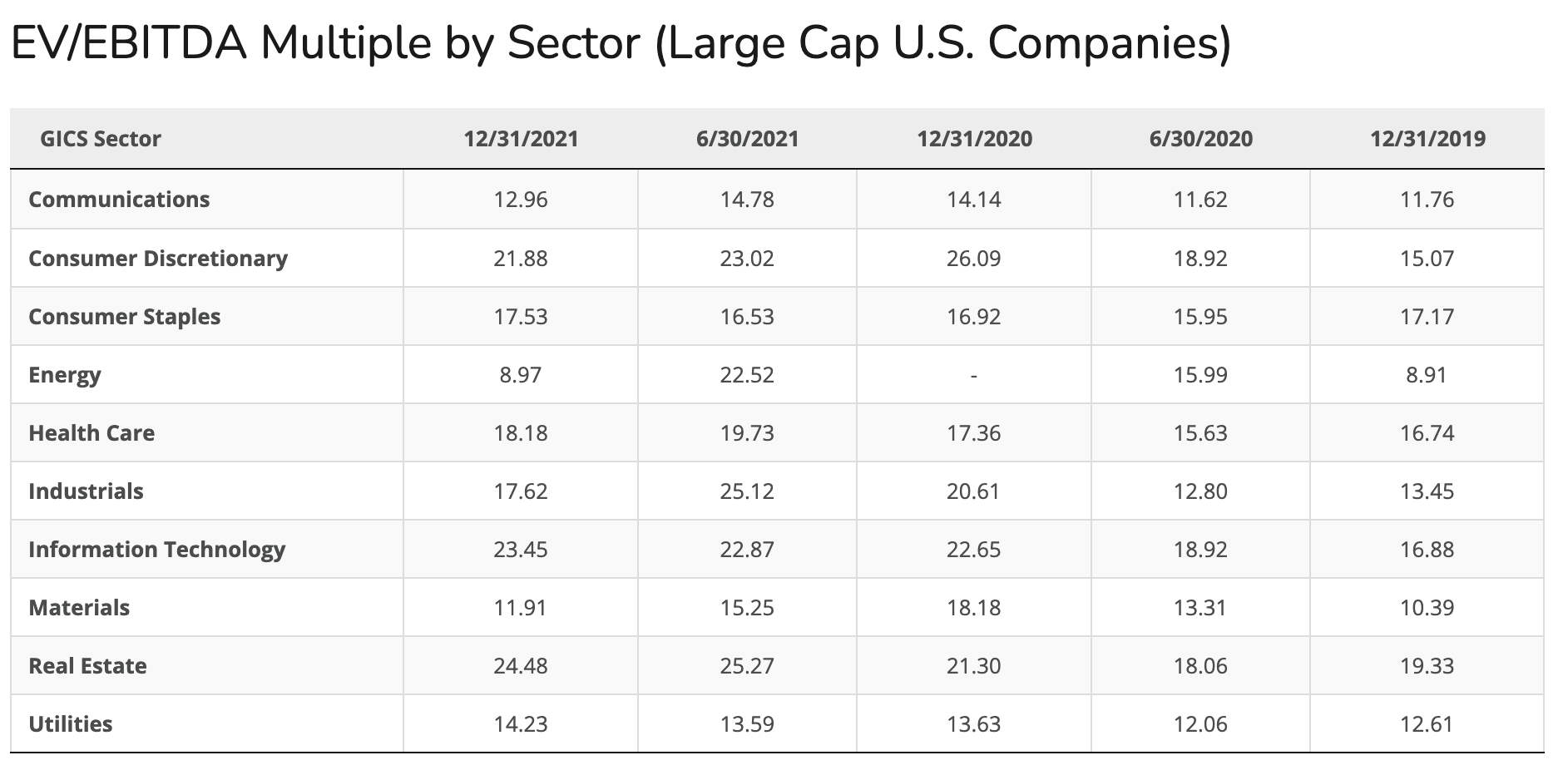In this lesson, we’ve covered that EBITDA is used as a tool to evaluate two relatively similar businesses within the same industry. EBITDA stands for Earnings Before Interest, Taxes, Depreciation, and Amortization. It doesn’t take into consideration other factors such as capital structures and assets’ costs.
During a valuation analysis, investors often use EBITDA as a valuation multiple because it allows for a more “apples-to-apples” comparison. It tells them your company’s ability to create cashflows from your operations.
What’s a multiple?
A multiple is a tool to measure one metric as a ratio of another. In other words, it’s a measurement tool that evaluates the well-being of a company by comparing two metrics. This is usually done by dividing the metrics one by the other.
EBITDA in valuation:
The three main types of valuation multiples are:
- Equity multiples
- Enterprise value multiples – Your EBITDA falls under this category.
- Revenue multiples. For example, MRR multiples.
There are a few ways to calculate your EBITDA multiple. This is the most commonly used one in a valuation analysis:
Enterprise Value (EV) / EBITDA = EBITDA multiple
Your Enterprise Value (EV) shows the amount needed to buy a specific company. The calculation for EV includes market capitalization of your company, total debts, and any cash on your company’s balance sheet.
For example, if your variations are as such:
EV = $40,000,000
EBITDA = $2,000,000
Then your EBITDA multiple is:
$40,000,000 / $2,000,000 = 20
You may think: That’s a good number, right?
Maybe. It depends on the industry benchmark. Apart from that, it also depends on what industry you’re in and what your revenue range is. Because multiples vary significantly within different sectors, countries and company sizes. Here’s an example:
| 2021 EBITDA Multiple | |
| Avg EV/EBITDA | |
| All | 19.1x |
| US Only | 29.3x |
| $10M - $50M | 19.0x |
| $50M - $100M | 18.8x |
| $100M - $200M | 19.6x |
Source: Microcap
According to Microcap, the global average EBITDA multiple for tech software companies is 19.1. This value increases to 29.3 in the U.S alone. Let’s take a look at our previous example and what it means. Assuming your variations are:
Revenue = $15,000,000
EV = $40,000,000
EBITDA = $2,000,000
EBITDA multiple = 20
It means that you are in this category:
| 2021 EBITDA Multiple | |
| Avg EV/EBITDA | |
| All | 19.1x |
| US Only | 29.3x |
| $10M - $50M | 19.0x |
| $50M - $100M | 18.8x |
| $100M - $200M | 19.6x |
Higher EBITDA multiples are expected in high-growth industries and lower multiples in industries with slow growth. With an EBITDA multiple of 20, it could mean:
- Your company may not be suitable for U.S investors looking to invest in high-growth companies.
- You have a higher chance of securing investments from global investors.
- Your company is more appealing to investors seeking to invest in later-stage, or slower growth, companies.
Here is another example of how EBITDA multiples vary according to industry and company size: 
Source: Siblis Research
The above multiples are calculated using the 500 largest U.S. companies. As of December 2020, the average value for a company of the same size in the I.T industry is 22.65.
Why use EV/EBITDA?
This multiple is often used with another multiple during a valuation. However, investors may also rely on it alone because it’s not affected by your company’s capital structure. Remember, EBITDA allows for a more “apples-to-apples” comparison.
Key takeaway:
During the early stage of your business, a company valuation is reasonably easy and straightforward. Investors will ask you about your Monthly Recurring Revenue (MRR), user base, and growth rate. Valuation is often based on MRR multiples, team, and total addressable market size.
As you progress through each funding round, it will start to get more complicated. Your investors and potential investors are going to dig deeper into your metrics. By the time you reach Series B, profitability matters a lot. This is where your EBITDA comes into play.
Happy Calqulating!

